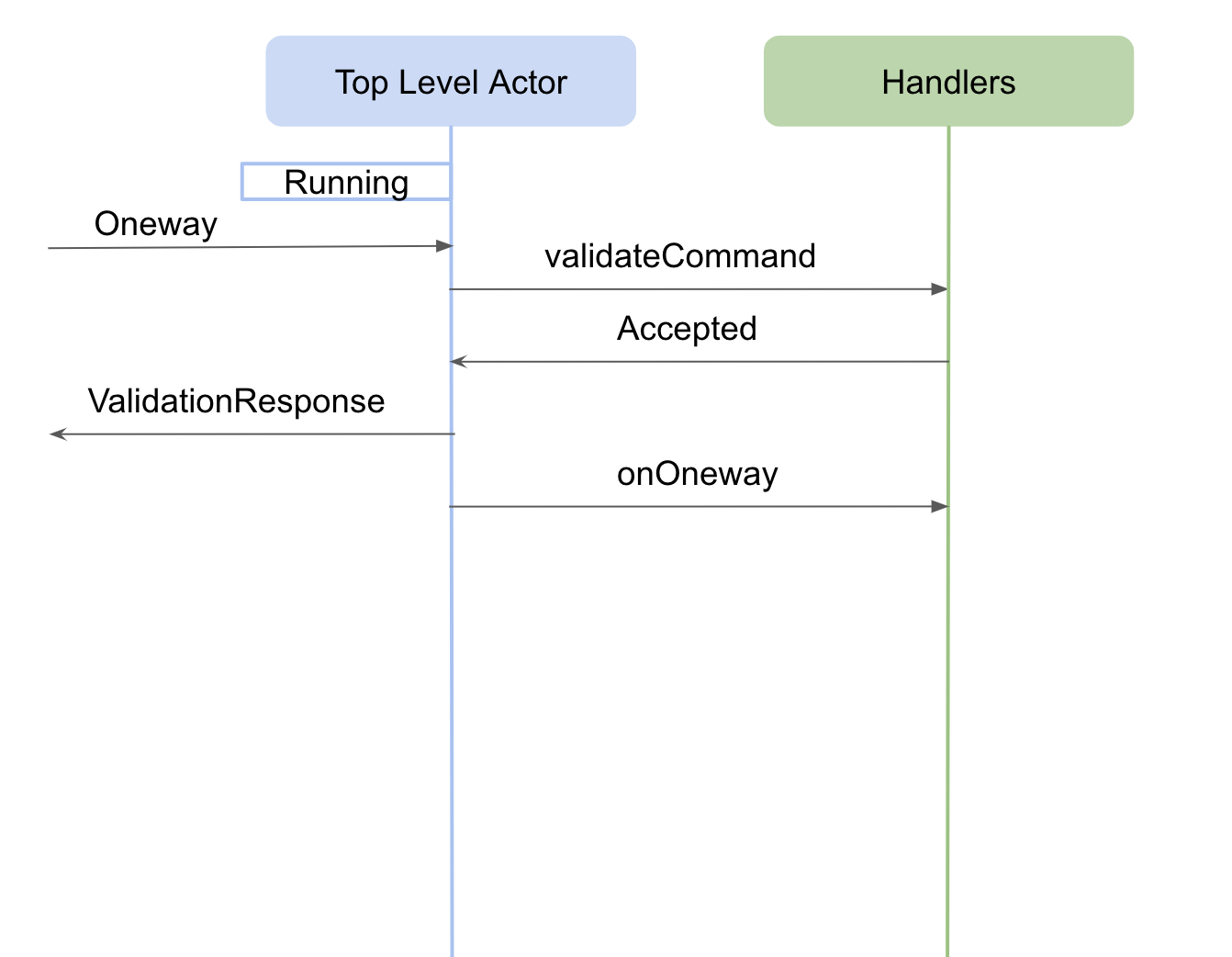Command
Commands can be sent to other component and responses can be received in return. To understand the underlying framework of the components and its deployment, please refer to the framework technical doc.
Sending Commands from the Component
The types of commands that can be sent by a component are discussed here. In order to send commands to other components, a CommandService helper is needed. CommandService helper is used to send commands to a component in the form of methods instead of sending messages directly to a component’s Supervisor actor. The creation of a CommandService instance can be found here.
The operations allowed through CommandService helper are as follows:
- validate
- submit
- submitAndWait
- submitAllAndWait
- oneway
- onewayAndMatch
- query
- queryFinal
- subscribeCurrentState
Receiving Responses from Components
Submit
To understand the flow of the Submit command, please refer to this section.

Oneway
To understand the flow of Oneway, please refer to this section.

Validate
To understand the flow of the Validate command, please refer to this section and the code base for the implementation can be found here.
Command Response Manager
Each component contains a Command Response Manager (CRM) with the sole purpose of helping to manage responses for long-running comamnds. If an Assembly sends a command to an HCD that is long-running, the HCD returns the Started response. The framework in the HCD notices the Started response and makes an entry in its CRM that a sender actor is may be expecting a final response for the command with the associated runId. It also tracks the most recent SubmitResponse for the command, which will always be Started when entered into the CRM.
If the Assembly (or any component) issues a query, the message is passed by the HCD’s Supervisor to the CRM, which returns the most recent response associated with the runId. If the Assembly (or any component) issues a queryFinal the HCD’s Supervisor forwards the request to the CRM, which makes an entry to remember that there is an Actor that needs to be updated with the final response for the runId. If the current response is already a final response, the Actor is updated immediately and no entry is made in the CRM.
When the actions in the HCD completes, the HCD uses the updateCommand method of the CRM. When this happens, the CRM updates the most recent response for the runId and then checks it’s table to determine if there are any Actors waiting for the runId’s final response. If there are waiting Actors, each of them is sent the final response, and each is then removed from the CRM tables. If there are no waiting Actors, only the current response for the runId is updated ready for the possibility that there will be a future query or queryFinal.
The CRM remembers roughly 10 recent commands, so query and queryFinal may be used successfully with commands that have completed for some amount of time. If there is no entry in the CRM for a provided runId, the CRM returns an Error response indicating it does not know the runId.
The CRM also provides a utility method called queryFinalAll. This is just a wrapper around the Future.sequence call that allows components sending sub-commands to wait for all the sub-commands to complete.

The Assembly worker can communicate with CommandResponseManagerActor using CommandResponseManager coming via CswContext.
Current State Pub/Sub Functionality
The framework provides a way, based only on Pekko, for one component to subscribe to CurrentState events provided in another component. This can be used by an HCD to keep an Assembly up to date on its internal state asynchronously outside of commands. This can also be coupled with the use of Oneway commands that do not provide completion responses to the sender as is done for Submit. The provider of CurrentState can use CurrentStatePublisher to publish its state from CswContext and the sender component can receive state using subscribeCurrentState from CommandService.
The Current State Pub/Sub is implemented in PubSubBehavior